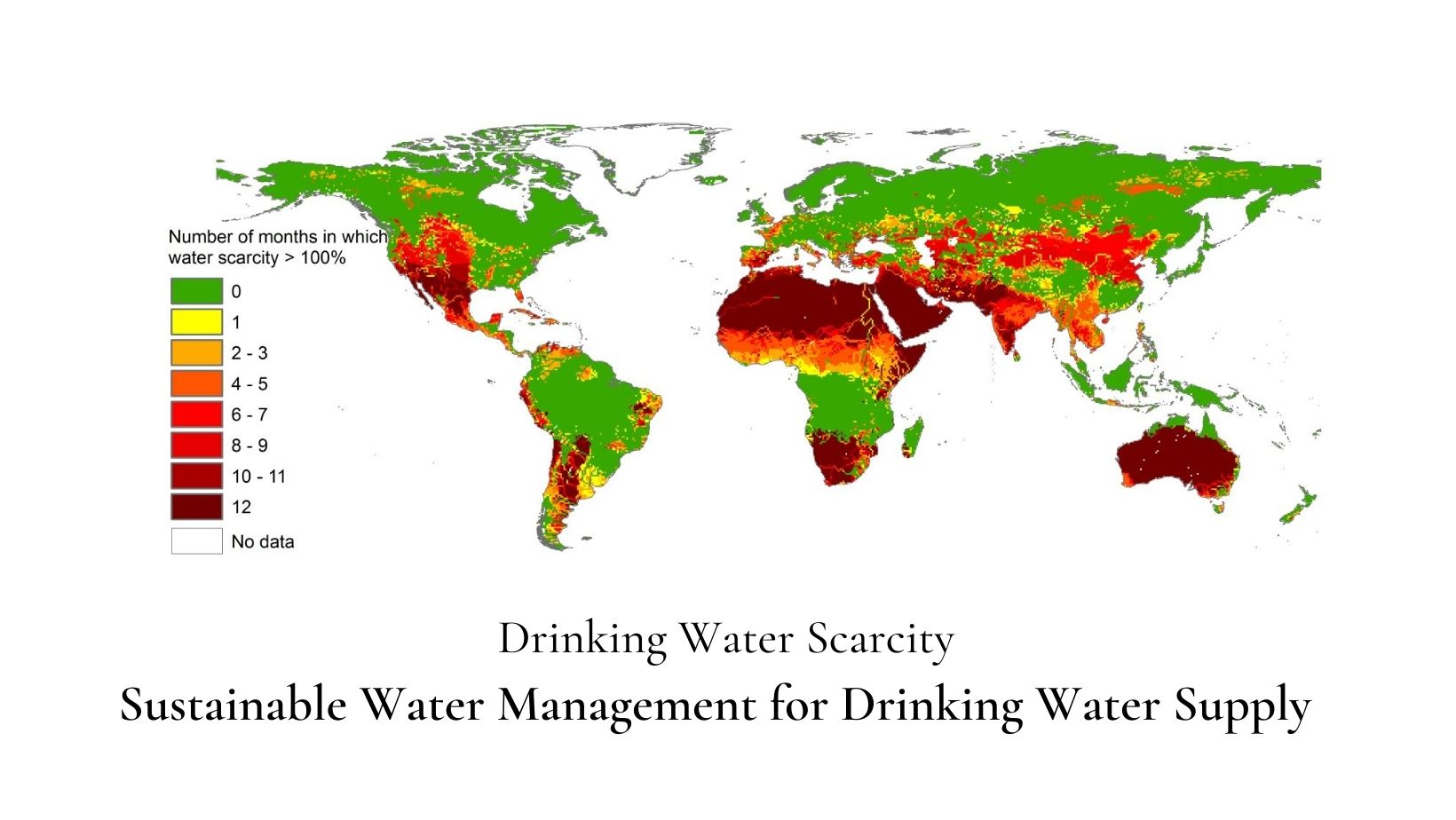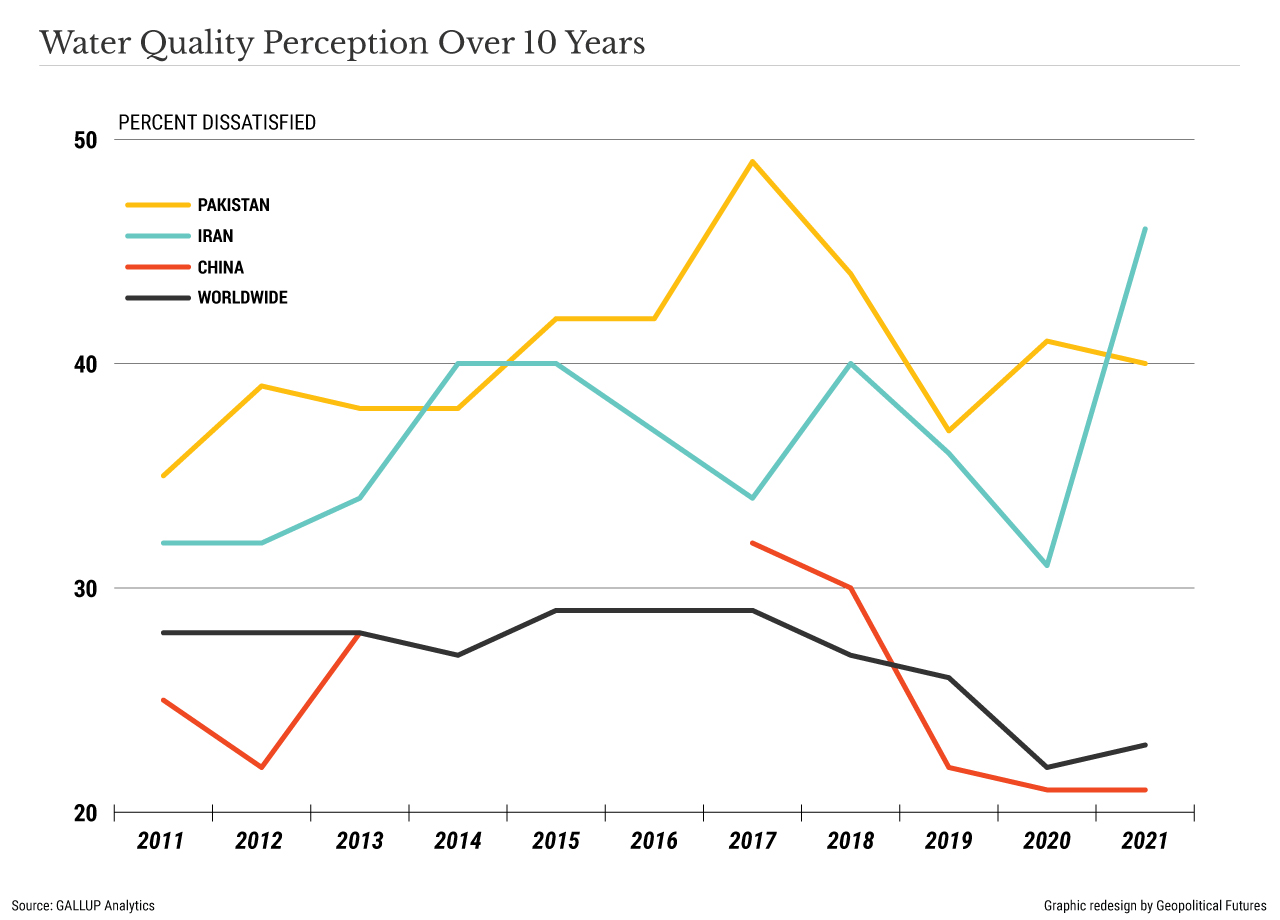Addressing the Notion of Drinking Water Scarcity: Effective Management of Surface and Groundwater Resources

Water is an indispensable resource for all life forms on Earth, and access to safe and clean drinking water is a fundamental human right. However, despite significant rainfall in various countries and an abundance of water resources in the form of rivers, lakes, ponds, and dams worldwide, there is still a prevailing notion of water scarcity, particularly when it comes to potable water. This article aims to explore the reasons behind this perception and discuss effective strategies to manage surface and groundwater resources to combat drinking water scarcity on a global scale.
Understanding the Perception of Drinking Water Scarcity
Water scarcity is a complex issue that goes beyond mere physical availability. It encompasses several factors, including inadequate infrastructure, inefficient management, population growth, climate change, and pollution. Although rainfall patterns and the presence of water bodies might seem sufficient, they do not always guarantee a sustainable supply of potable water.

Challenges of Surface and Ground Water Management
Surface water, such as rivers, lakes, and dams, plays a crucial role in meeting the world’s water demands. However, managing surface water effectively requires careful planning and sustainable practices. Some challenges that hinder the availability of safe drinking water from surface sources include:
- Population Growth and Urbanization: Rapid population growth and urbanization have increased the demand for water, straining existing water resources and infrastructure. The concentration of people in cities exacerbates the perception of scarcity, as distribution systems may struggle to meet the needs of densely populated areas.
- Unequal Distribution: Water scarcity is often a result of uneven distribution, both geographically and temporally. While some regions face excessive rainfall and flooding, others experience prolonged dry spells and droughts. This imbalance, combined with inadequate infrastructure for water storage and transportation, contributes to the perception of scarcity and may result in regional disparities in water access and scarcity, exacerbating socio-economic inequalities.
- Water Quality Challenges: The availability of water alone does not guarantee potable drinking water. Pollution from industrial discharge, agricultural runoff, and inadequate sanitation systems contaminates surface and groundwater sources, rendering them unsafe for human consumption and making it necessary to treat water before it is safe for consumption. Inadequate wastewater treatment systems further exacerbate this issue. Poor water quality further reinforces the notion of scarcity.
- Inefficient infrastructure: In many regions, water infrastructure is outdated or poorly maintained, leading to significant losses through leakage and evaporation. Enhancing infrastructure efficiency and reducing losses are essential steps toward improving water availability.
- Climate change: The impacts of climate change, such as altered precipitation patterns and increased frequency of extreme weather events, pose additional challenges to surface water management. Droughts, floods, and storms can disrupt water availability and quality, affecting drinking water sources.
Managing Surface Water Resources to Combat Drinking Water Scarcity
- Efficient Water Storage: Constructing and maintaining reservoirs, ponds, and dams plays a crucial role in managing surface water. These structures help capture excess rainfall and store water during wet periods, ensuring a constant supply during drier times. Proper maintenance, including desilting and regular inspections, is essential to optimize storage capacity.
- Rainwater Harvesting: Encouraging rainwater harvesting at individual and community levels can provide an additional source of freshwater. This sustainable practice involves collecting rainwater from rooftops and other surfaces, channeling it into storage tanks or recharge systems, and using it for various non-potable purposes or treating it for drinking.
- Water Conservation: Promoting water conservation practices, such as reducing leakages in distribution systems, implementing efficient irrigation techniques, and raising awareness about responsible water usage, can significantly contribute to minimizing water scarcity. Public participation and education are key to achieving lasting behavioral change.
Managing Groundwater Resources
Groundwater, stored in underground aquifers, serves as a vital source of drinking water for many communities worldwide. However, unsustainable extraction practices and contamination have threatened its long-term availability. Here are some strategies for managing groundwater effectively:
- Sustainable Extraction: Groundwater resources are vital for meeting drinking water needs, especially in regions with limited surface water availability. Implementing sustainable pumping practices, such as regulated extraction rates and promoting the use of efficient irrigation methods, can prevent overexploitation and groundwater depletion. Balancing withdrawal rates with recharge rates helps maintain aquifer sustainability.
- Recharge Enhancement: To replenish depleted aquifers, it is crucial to adopt techniques and water conservation practices that enhance groundwater recharge and preserve groundwater reserves. This can include strategies like rainwater harvesting, constructing artificial recharge structures, promoting natural recharge zones, and regulating land-use practices to minimize surface runoff and promote infiltration. Efficient irrigation techniques and managing industrial water usage are also essential in reducing groundwater demand.
- Monitoring and Governance: Effective management of groundwater resources requires regular monitoring of aquifer levels, quality, and extraction rates. Implementing robust governance frameworks, supported by scientific research and data, helps ensure sustainable use and equitable distribution of this finite resource.
- Water-sensitive land management: Adopting land management practices that promote infiltration, such as preserving wetlands and reducing impermeable surfaces, can enhance groundwater recharge. It is crucial to prevent contamination from chemicals, fertilizers, and other pollutants through better land-use planning.
- Integrated water resource management: Developing holistic approaches to water management, incorporating both surface and groundwater resources, helps optimize water allocation and utilization. This includes considering the interconnections between different water sources and sectors like agriculture, industry, and domestic use.
Successful Case Reference to Manage Water Scarcity
There are many examples and programs that demonstrate the effectiveness of comprehensive programs that combine infrastructure development, community participation, and sustainable water management practices to address drinking water scarcity. By learning from successful initiatives and tailoring approaches to specific contexts, it is possible to make significant progress in ensuring access to safe and sufficient drinking water for all.
- The Sujalam Sufalam Jal Sanchay Abhiyan (SSJSA), India: Launched in the state of Gujarat, this program focuses on water conservation and recharge through the construction of check dams, farm ponds, and other water-harvesting structures. It has significantly improved groundwater levels and increased water availability for drinking and irrigation purposes.
- The Water for People Program, Bolivia: This program aims to provide sustainable water solutions in rural areas by implementing community-based water systems. It focuses on capacity building, infrastructure development, and long-term operation and maintenance, ensuring access to safe drinking water for thousands of people.
- The Water and Sanitation Program, Bangladesh: This program, led by the government and supported by international organizations, has successfully improved water supply and sanitation in rural areas. It involves community participation, infrastructure development, and behavior change campaigns, resulting in increased access to safe drinking water.
- The Singapore Water Story: Singapore, a country with limited water resources, has successfully implemented a comprehensive water management strategy. Through a combination of desalination, water recycling, efficient water use, and catchment management, Singapore has achieved water self-sufficiency and reduced its reliance on imported water.
- The Water for Life Decade, Tajikistan: This program, initiated by the government and supported by international organizations, aimed to improve water supply and sanitation services in rural areas. It involved infrastructure development, capacity building, and community engagement, leading to increased access to safe drinking water for remote communities.
- The Millennium Water and Sanitation Program, Ethiopia: This program focuses on providing access to safe drinking water and sanitation facilities in rural areas. It involves the construction of water points, training of community water committees, and integrated water resource management practices, significantly improving water availability and quality.
Conclusion
The perception of global drinking water scarcity arises due to a combination of factors, including pollution, inefficient infrastructure, unequal distribution, and the challenges posed by climate change. By effectively managing surface and groundwater resources, we can address drinking water scarcity and promote sustainability.
To combat this issue, it is vital to implement robust water management strategies that encompass comprehensive monitoring, regulation, and conservation practices. Promoting sustainable groundwater extraction, protecting water bodies from pollution, and adopting integrated water resource management approaches are key steps toward ensuring a sufficient supply of safe drinking water for all.
Achieving global water security requires collaborative efforts from governments, communities, and individuals. By prioritizing sustainable water management practices, we can overcome the notion of water scarcity and pave the way for a future where clean and potable water is accessible to everyone on Earth.
There are many live examples that prove that the objective is achievable with integrated planning and contribution from each and every stakeholder associated with Drinking Water Scarcity.

